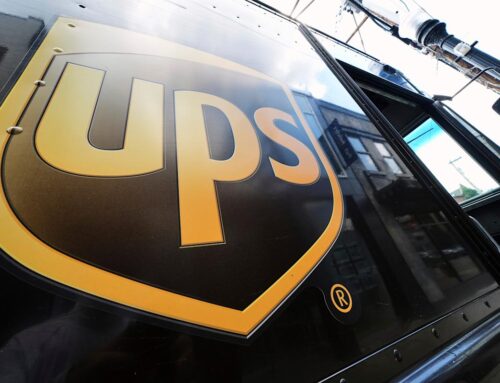North Dakota and Minnesota at odds over energy grid update, clean energy goals
October 28, 2025
NINA MOINI: This month, the utility companies Great River Energy and Minnesota Power broke ground in Becker on new power lines. It’s part of a large project to update the region’s power grid, which helps move along the state’s plan to reduce its carbon footprint.
But North Dakota filed a federal complaint to stop it, saying that their residents should not have to pay higher rates to subsidize Minnesota’s energy goals. Here to explain the conflict and where to go from here is University of Minnesota Law Professor James Coleman. Thanks for your time this afternoon, Professor.
JAMES COLEMAN: Thanks. Great to be talking with you.
NINA MOINI: First, I wonder if people may not even how connected our energy grid is with other states. Can you tell us a little bit about the regional energy grid that Minnesota is a part of and that interdependence?
JAMES COLEMAN: Yeah. So there’s a North American power grid, which is often called the biggest machine in the world. It’s over several trillion dollars of investment. And it connects all of North America together.
But in particular, there’s an eastern interconnection that covers from the East Coast into Canada and all the way out to the Great Plains. And so Minnesota sits almost at the center of that grid.
NINA MOINI: OK. So there’s this complaint to the federal government led by North Dakota about updating the regional power grid. Can you explain what these updates are?
JAMES COLEMAN: Yeah. So this is part of a process that’s been ongoing for a long period of time of building out the power lines that are needed to connect new sources of power with the grid and share power across the Midwest. And so those new power lines, in particular, are necessary for new solar and wind facilities that are connecting to the grid to help meet some of the goals that have been set in states like Minnesota for more renewable power.
NINA MOINI: OK. And it sounds like North Dakota, then, is concerned saying, well, those are your goals, not our goals. Tell us a little bit more about the concerns there.
JAMES COLEMAN: Yeah. That’s right. So the MISO, which is the Midcontinent Independent System Operator, who manages the power grid, when they try to make projections about what kind of power lines are needed, of course, they have to consider what kind of goals all of the states within that system use.
And so there’s obviously a disagreement about whether Minnesota’s goals are important to spend money on meeting between states like Minnesota and states like North Dakota. And that’s really at the crux of this dispute.
NINA MOINI: And I understand there are also other states, Louisiana, Mississippi, Montana, Arkansas, that are also backing North Dakota on this complaint. What do states that are farther away from Minnesota stand to gain or lose from these updates?
JAMES COLEMAN: Yeah. North Dakota is most centrally concerned. But for those other states, there’s a concern about the precedent, obviously, because there might be those differences between how states like Minnesota treat questions like how much renewable energy we have on the grid and states like all of the rest of those, Montana, Louisiana, Arkansas, et cetera.
But in terms of the states that are really going to see higher bills because of this investment in power lines that are necessary to meet Minnesota standards, North Dakota is really at the center of that dispute.
NINA MOINI: So North Dakota is arguing states with these ambitious decarbonization targets, like Minnesota, should be the ones to pay for the infrastructure needed. How have these costs historically been spread across states? Does this come up all the time?
JAMES COLEMAN: Well, it does, but for these Midwestern states, we’ve seen fewer disputes than we’ve seen in some other parts of the country. So it’s very common to have disputes about who should pay for shared power infrastructure, for shared investments in the power grid.
In the Midwest, in some ways, maybe it’s surprising that we haven’t had more disputes sooner, given the diverging tracks that you’ve seen in terms of climate and renewable policy. So perhaps it’s not a surprise. Perhaps it’s only a surprise that we haven’t had this dispute earlier.
But in the past, we’ve seen that states have mostly been able to come together with a shared vision of how many power lines and where power lines need to be built. Here we’re seeing that shared vision break down.
NINA MOINI: Can you remind us just what Minnesota’s energy goals are right now and just how the regional power grid fits in?
JAMES COLEMAN: Minnesota has very aggressive goals to rapidly transition to mostly renewable power. And one of the challenges there is that Minnesota historically has been more dependent on coal and now is increasingly dependent on natural gas for electricity.
And so if it’s going to meet its renewable goals, it’s going to have to get a lot of power from places where wind is more abundant, where sun is more abundant, and there’s maybe less population.
So you’re talking about importing a lot of power from those Western states, as well as to some extent, Iowa, et cetera. And so the power grid is really crucial to helping Minnesota meet the goals that it set for the percentage of renewables on the grid.
NINA MOINI: How do conflicts like this, if they arise, play out in other parts of the country, I wonder. Is this an issue on the West Coast and East Coast? I mean, you think about New York or California and how those states would fit in with their surroundings. How does that go over usually?
JAMES COLEMAN: Yeah, absolutely. This has been a fight across the country. And it’s important to understand that it is often for different reasons. So it’s not always about disagreements and renewable penetration on the grid.
So if you look at Minnesota versus North Dakota, that’s one of the bigger contrasts you get between neighboring states in terms of some of their goals for addressing climate change and moving away from fossil fuels.
And so I think it’s not that surprising that we have a dispute here. But there have long been disputes that are more just about financial burden sharing. We’ve seen a number of disputes in PJM, the neighboring independent system operator that we have, which basically, there’s been fights– East Coast or Midwestern states should pay more for the power lines that are built.
And we’ve often seen those reach federal courts. And sometimes, the decisions of the independent system operator have been overturned by the federal courts. And so these are long-running disputes that we’ve seen. So in some ways, it’s not surprising. Maybe it’s just surprising we haven’t seen as many fights yet.
NINA MOINI: And what do you think about just the future of disputes like this? Minnesota broke ground on part of this project, I understand, in Becker earlier this month. I wonder, as time moves on, if states start to set more ambitious goals, what that would look like.
JAMES COLEMAN: Yeah, this is undoubtedly a big problem. I mean, when you look at what MISO did, in this case, the grid manager for the Midwest, in part, it was relying not just on those state standards, but to a certain extent on federal goals for decarbonization.
And of course, in the interim, a lot of those federal goals and federal incentives have started to be rolled back. And so the less federal policy we get on increasing renewables, et cetera, the more those differences from state to state become salient, because they’re not operating against a backdrop that’s moving everybody toward more renewable energy.
And so I expect that we’ll see a lot more of these going forward in the absence of some kind of federal plan that gets every state on the same track.
NINA MOINI: All right, James. Thanks so much for stopping by Minnesota Now and breaking all this down for us. Thank you.
JAMES COLEMAN: Thank you.
NINA MOINI: That was James Coleman, a professor focused on energy law at the University of Minnesota Law School.
Search
RECENT PRESS RELEASES
Related Post



